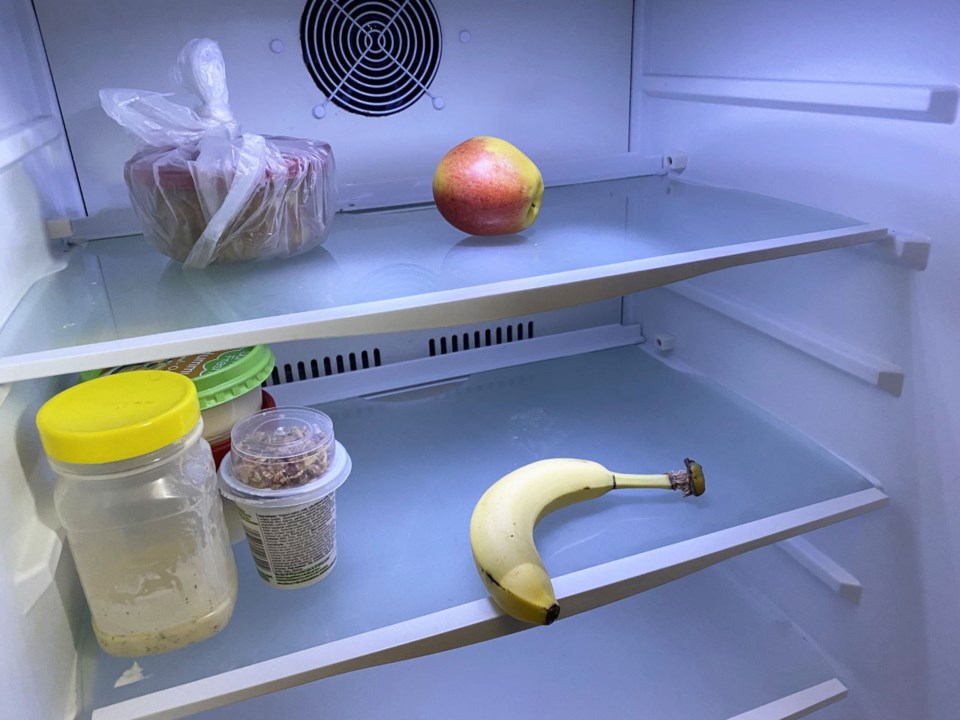A 65-year-old Canadian woman diagnosed with scurvy is raising questions over whether a condition often associated with 18th-century sailors could signal another warning sign of modern poverty.
The woman smoked half a pack of cigarettes a day and had a history of chronic illnesses, including high blood pressure, anxiety and depression — all of which limited her ability to go shopping and cook fresh food.
When she entered a Toronto hospital’s emergency department, the woman said she had experienced more than a week of increasingly poor mobility. Purple lesions were found on her legs and images of her mouth showed enlarged and swollen gums.
Sarah Engelhart, a specialist in internal medicine at Mount Sinai Hospital who treated the woman, said that when she first saw her, scurvy was the last thing on her mind.
“I was initially thinking of approaching this as a case of abnormal bleeding,” she said.
But then the patient's lab results and medical history came back. They showed undetectable vitamin C levels in the woman. The patient also reported little social or family support, wrote Engelhart and three colleagues in a report published in the Canadian Medical Association Journal (CMAJ) Monday.
“This social isolation had resulted in a sustained period of dietary intake limited to predominantly nonperishable foods — specifically, canned soup and tuna fish, along with white bread and processed cheese," wrote the doctors.
Two weeks of inpatient rehabilitation and oral vitamins returned her vitamin C levels to normal, confirming the doctors’ suspicions, the doctors said in their report.
A grim and preventable disorder
Vitamin C is critical for a number of bodily functions, including healing wounds and forming collagen, the latter a critical structural protein that literally holds the body together in the form of bones, cartilage, tendons, ligaments and skin.
Those who face deficiencies often suffer fatigue, weakness, irritability and a depressed mood, according to the CMAJ report. Over the long term, symptoms progress to include corkscrew hairs, musculoskeletal pain and bleeding in the mouth.
Scurvy sufferers face painful joint swelling, brittle bones and easy bruising, according to the U.S. National Library of Medicine. As the disorder progresses, eyes bleed, the immune system collapses and organs fail in the lead up to death.
History is rife with stories of scurvy, from tales of debilitated pirates to devastating potato famines, polar expeditions and the Klondike Gold Rush.
Widespread reports of scurvy have fallen since Hungarian biochemist Albert Szent-Györgyi discovered the molecular structure of vitamin C in 1920 (he named it ascorbic acid, or “away from scurvy” in Latin). But modern cases are more common than some might think.
Engelhart said that while the case represents a snapshot of a single patient, anecdotally, it's not the first case of scurvy she and her colleagues have treated.
“Someone needs to be severely deficient. Really no vitamin C in their diet for a couple of months before scurvy develops. That means a severely restricted diet,” Engelhart said.
“It’s not something that's super common by any means. But it’s also not something that’s that rare.”
In the latest CMAJ study, Engelhart pointed to national data showing vitamin C deficiency impacting 5.9 per cent of the U.S. population and as much as 25 per cent of some British populations facing poverty.
In Canada, the prevalence of scurvy is less clear. In the Hamilton, Ont., area alone, one study found more than 50 patients with vitamin C deficiencies over an eight-year period.
Clinical data shows that 12 per cent of patients admitted to an acute care geriatric ward have shown symptoms of scurvy. The authors also warn that food insecurity — currently impacting at least one in five Canadian households — is “an equally important and ubiquitous risk factor” for the disorder.
Food insecurity a modern risk factor for scurvy
Valerie Tarasuk, a professor at the University of Toronto’s Department of Nutritional Sciences, and head of PROOF, a research group investigating food insecurity in Canada, said the case of scurvy offers a vivid example of what can happen to someone when they don't have fresh food to eat.
“As prices have risen and more and more people are getting pushed to the margins, it makes sense that, day after day after day, if they're eating a really compromised diet,” said Tarasuk.
It comes at a time of rising food insecurity in Canada. The percentage of Canadians who were food insecure climbed to 16.9 per cent in 2022, a more than five per cent spike from 2018, according to Statistics Canada.
Sylvain Charlebois, a senior director of the Agri-Food Analytics Lab at Dalhousie University, said unpublished results from a recent national survey on food sentiments paints a picture of Canadians continuing to struggle under rising grocery costs.
If people were already under pressure before the “food inflation storm” more than two years ago, Charlebois said today people are spending even less on food as they prioritize other costs like housing.
“You can only get scurvy due to malnutrition and vitamin C deficiency,” he said. “To hear something like this happening in Canada… It’s quite frightening.”
For Tarasuk, the scurvy diagnosis shows there needs to be more vigilance in reporting nutrient deficiencies across Canada.
“This happens with people who are in extremely deprived circumstances,” she said. “Is this woman the tip of the iceberg, or is this just an aberration? We need to know.”



